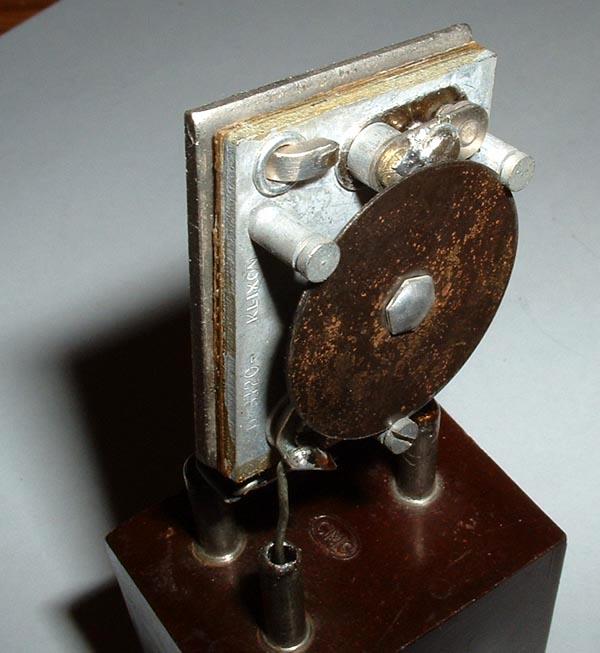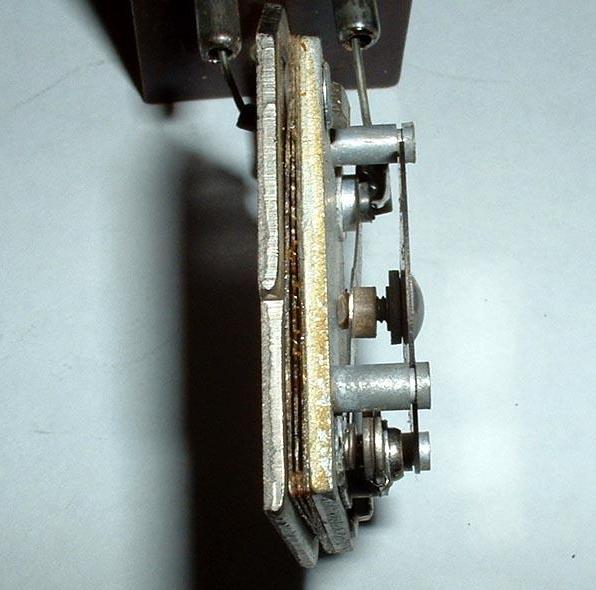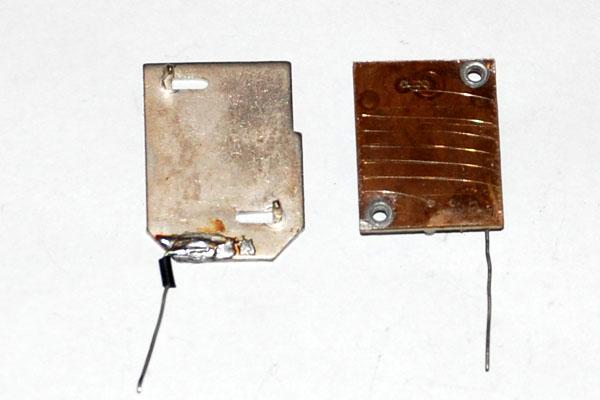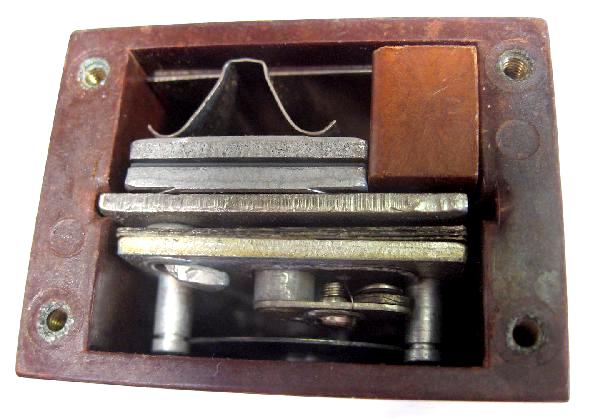 |
| This collection of three prong crystals came from the SPARC Museum [1] via Bruce Macmillian. What a variety! The Bliley crystal has two crystal elements but only marked with one frequency, namely 2110 KHz. Note the FT-249 case designator on the US Army Signal Corps holder. (Photo by Bruce Macmillan) |
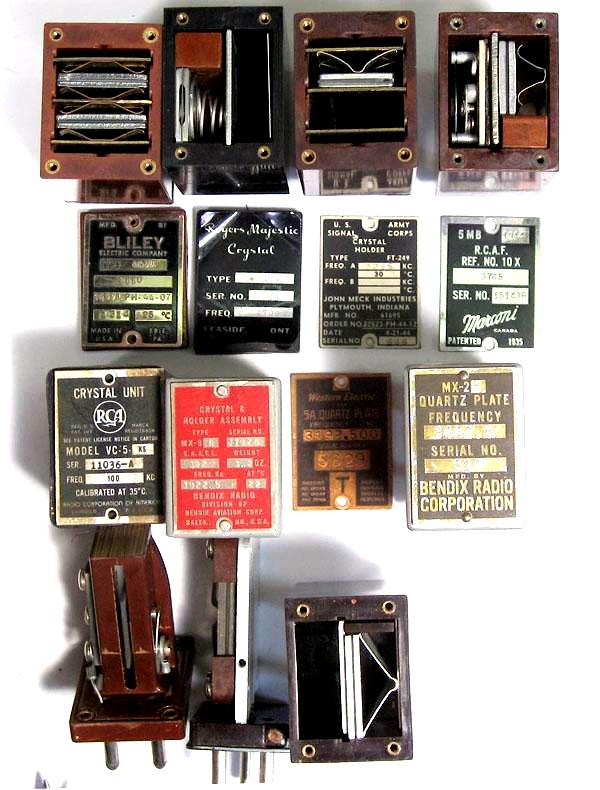 |
| With covers off. The Bendix MX-2 could not be opened. (Photo by Bruce Macmillan) |
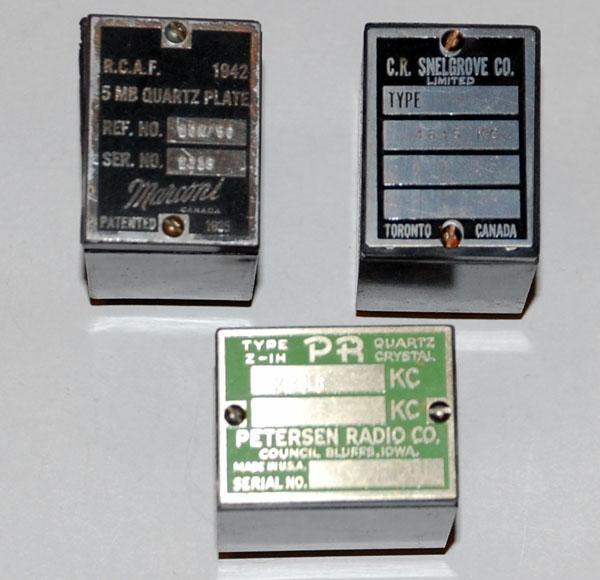 |
| To add to the mix, here are two more manufacturers of three prong crystals and one variant. (Photo by Jerry Proc) |
